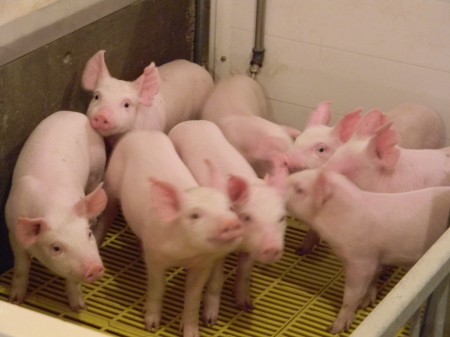
Globalization is so great for so many things.  I really like eating fresh oranges and lettuce in the winter, and the sheer variety and quality of food we eat is a testament to the enormous infrastructure, logistics, and effort involved.  However, the same agriculture and food systems which allow for this variety can also make each individual producer vulnerable.  Although I grew up in the Fraser Valley with myriad market veg and fruits, Saskatchewan is far more driven by commodities.  Be it meat or grain, it tends to all be produced the same way with minimal variations in quality,  so barring any difficulties in transportation, tarrifs or  import procedures, the prices are the same market-wide.  This is why wheat is often the example commodity in introductory microeconomics classes: a consistent product allows for perfect competition between many producers.  However, given that the cost of production can vary in different areas, this means the invisible hand starts to squeeze producers with higher overhead costs.
Good rainfall in Saskatchewan matched with drought in the midwestern United States has meant that the Saskatchewan grain crop is good while the dearth of US production drives the price of grain up… good for Sask grain farmers!  However, these same conditions have proved very difficult for Saskatchewan meat production.  Animals eat grain, and more costly grain here means more overhead.  Unfortunately, the price of pigs has not followed the price of grain, and so pig farmers take a loss on every animal sold, resulting in one large Sask pork producer going into receivership.  Last month in Manitoba this situation took a far more dire turn, as 1300 weanlings were euthanized because (at the end of the day) it cost more to feed them than farmers could recoup through sales.  The saddest part (besides allegation of animal suffering and cruelty)  is that pigs killed in the barns cannot be butchered or sold, and can’t safely be eaten locally, so the whole thing is a waste of life, protein, or grain, depending on your perspective.  Smith says that the invisible hand should work it all  out so that pig farms will only exist in places where grain is predictably cheap and overhead is low… although these are often also places where worker safety is low, animal rights are minimal, and food safety regs are less stringent.  Doesn’t sound like a win to me.
The silent loss here could definitely be worker health and safety – either because workers loos work or job security, increase casual work or unpaid overtime, and because the economic squeeze creates an incentive to cut corners when it comes to health and safety.  Why should one prioritize health and safety in hard times (or good times, for that matter?)  It comes down to a simple business principle:
Profit = Revenue – Loss
- Elevated Workers’ Compensation rates
- Sick leave and absenteeism
- Worker turnover
- ‘Presenteesim’ (low productivity from folks that show up hurt)
